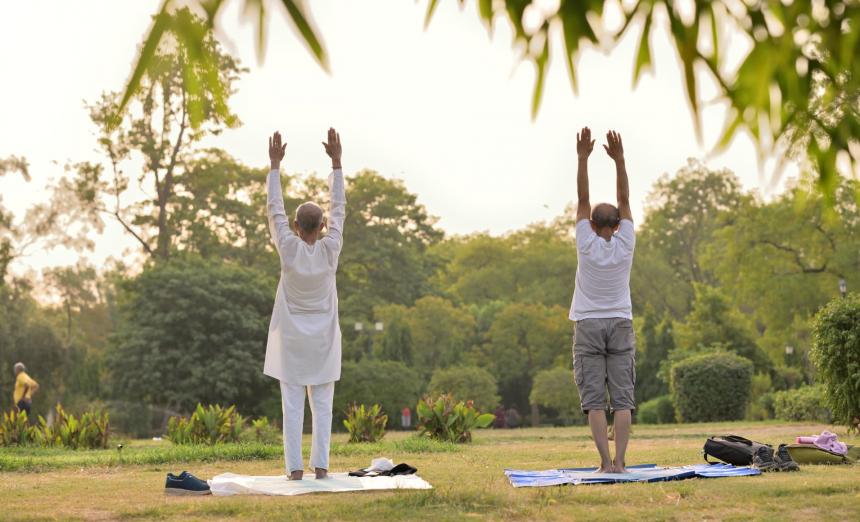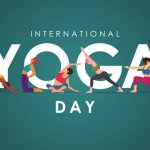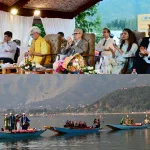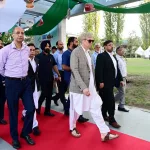Across continents and cultures, through the din of politics, religion, and race, there exists one shared rhythm—the breath. It is the silent thread that binds the human experience from the moment of birth to the final departure. Breath does not need translation. It knows no flags or boundaries. And it is through this primal rhythm that yoga rises, not merely as an ancient Indian practice, but as a universal language—a path of unity, wellness, and self-discovery that speaks to all who choose to listen within.
Yoga, in its essence, is a journey inward. It is not just the stretching of limbs or the choreography of postures—it is the expansion of consciousness. Rooted in the deep philosophical soil of Indian civilization, yoga was never limited to a set of physical movements. The sages and seers of ancient India understood it as a complete system of life: a harmonious balance of body, mind, and spirit.
The Yoga Sutras of Patanjali, one of the foundational texts of yogic philosophy, outlines an eightfold path that includes ethical principles, self-discipline, physical postures, breath regulation, withdrawal of the senses, concentration, meditation, and ultimately, liberation. This path does not preach exclusion or rigidity but offers an inclusive framework for human flourishing.
In a world so often fragmented by difference, yoga offers not uniformity, but unity. It does not demand conversion or renunciation of one’s beliefs; instead, it gently reminds the practitioner of the still point within, where all identities dissolve into pure being. When a person sits cross-legged, closes their eyes, and begins to observe the breath, a subtle transformation occurs. The mind slows. The noise fades. The awareness deepens. It is in this sacred silence that the universality of yoga reveals itself.
The global spread of yoga over the past century is not a result of any aggressive evangelism but a quiet revolution of resonance. From the ashrams of Rishikesh to the wellness studios of Paris, from remote Himalayan villages to New York’s bustling boroughs, people gather—not to compete, but to be still.
The physical postures, or asanas, act as doorways to something deeper. Each pose carries within it a metaphor. The mountain pose teaches us stillness. The warrior pose instills courage. The tree pose teaches balance amidst instability. The corpse pose—Shavasana—teaches us the profound art of letting go.
The breath, or prana, is the golden thread running through all these practices. It is more than oxygen—it is life force. In conscious breathing, yoga becomes not only a physical or mental practice but an intimate prayer. Every inhalation becomes an offering to life; every exhalation, a release of burdens. In the breath, there are no boundaries, no divisions. It is the purest expression of life itself. And when people in different corners of the world engage in breath-focused yoga, they are unknowingly synchronizing with one another—a global meditation in motion.
Yoga’s journey from the East to the West was shaped by mystics and visionaries who recognized its power beyond cultural confines. Swami Vivekananda’s historic address at the Parliament of the World’s Religions in 1893 planted the seed of yoga’s global presence.
In the decades that followed, masters like Paramahansa Yogananda and B.K.S. Iyengar further nurtured its growth, each interpreting and teaching the practice according to the needs of the time. As science began to investigate yoga’s benefits, what the ancients intuitively knew was confirmed by research—yoga lowers stress, boosts immunity, enhances mental clarity, and promotes overall well-being.
But the appeal of yoga is not confined to its physiological benefits. There is something about the practice that whispers to a deeper human longing—the desire to belong, to connect, to be whole. It is this quality that makes yoga a sanctuary in an increasingly noisy world. It offers a sacred pause in the rush of modern life, a return to simplicity. In the quiet of a yoga practice, people rediscover their own humanity. And in doing so, they also rediscover each other.
In many ways, yoga has become a quiet ambassador of cultural harmony. It carries within it the wisdom of India but speaks to hearts across the world. In cities and villages, among children and elders, across races and religions, yoga builds bridges—not through words, but through breath. It allows a Muslim woman in Istanbul and a Buddhist monk in Thailand, a soldier in Brazil and a software engineer in Bangalore, to sit in the same posture, breathe in the same rhythm, and feel the same presence. Such is the unifying power of this ancient gift.
However, the global embrace of yoga also calls for a certain reverence. As the practice finds its way into fitness routines and commercial spaces, there is a risk of reducing it to a mere product. The soul of yoga must not be lost in spectacle or stripped of its deeper philosophy. It is not simply about flexibility of the body, but about the flexibility of mind and heart. Practicing yoga with awareness, gratitude, and humility ensures that its integrity remains intact, even as it evolves to meet contemporary needs.
India, the land where yoga first blossomed, carries a special responsibility. It must act not as the proprietor of yoga, but as its custodian. The decision to propose June 21st as the International Day of Yoga, accepted unanimously by the United Nations, was not an act of cultural pride but a spiritual offering to the world. It served as a reminder that in a time of division and disillusionment, the ancient path of yoga can serve as a beacon of unity and renewal.
On this day, one witnesses something extraordinary—millions across the globe, on beaches, in stadiums, parks, and temples, rolling out their mats, joining their palms, and surrendering to the same breath. Diplomats and farmers, teachers and students, soldiers and saints—all participate in a collective gesture of harmony. In those moments, yoga ceases to be a practice and becomes a prayer. A prayer not tied to any one god or scripture, but a universal invocation of peace and awareness.
Yoga does not promise escape from the world, but a better way to live within it. It teaches strength not through dominance, but through balance. It teaches progress not through competition, but through discipline. And most importantly, it teaches that transformation begins not outside, but within. As the great sage Sri Aurobindo wrote, “Yoga is the turning of the human soul towards the Divine.” In turning inward, we illuminate the world around us.
Perhaps this is why, even in times of upheaval and uncertainty, people turn to yoga. Not for answers, but for silence. Not to gain control, but to surrender. Not to find superiority, but to rediscover the beauty of simplicity. When practiced in its true spirit, yoga becomes more than a discipline—it becomes a way of being. It reminds us that before we are citizens, workers, or believers, we are human beings. And that the breath—the most basic act of life—is sacred.
The breath that unites us is not just an idea. It is a lived reality. With every mindful inhale and exhale, we move closer to each other. We dissolve the illusions of separateness. We return to what is real, to what is eternal. And in that sacred return, yoga offers us something precious: not just a healthier body or a calmer mind, but a deeper sense of belonging—to ourselves, to each other, and to the world.
For in the end, the breath knows no borders. And yoga, like breath, belongs to all.
(Author is RK Columnist and can be reached at: [email protected])








